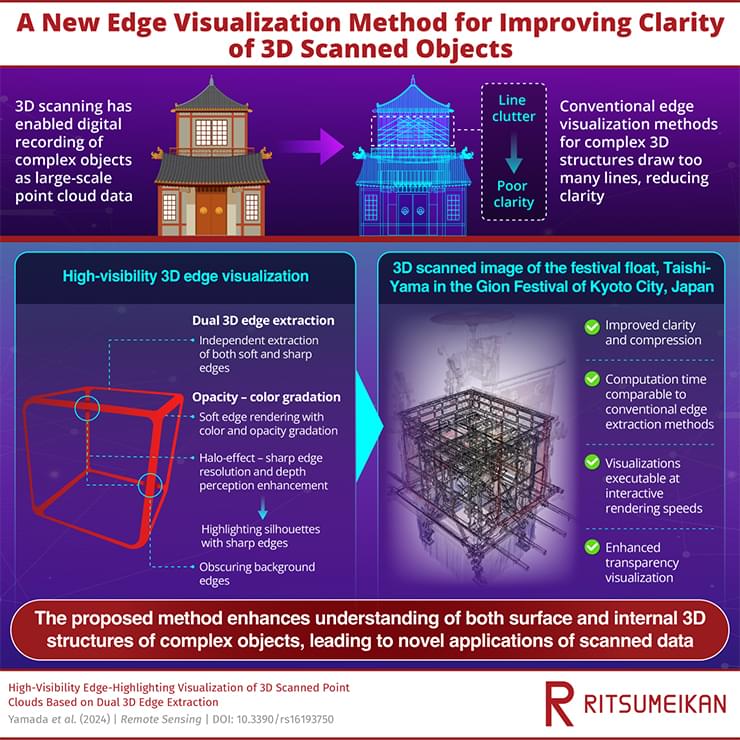Researchers develop a novel edge-highlighting visualization technique for more comprehensible 3D-scanned objects. Improvements in three-dimensional (3D) scanning have enabled quick and accurate scanning of 3D objects, including cultural heritage objects, as 3D point cloud data. However, conventional edge-highlighting visualization techniques, used for understanding complex 3D structures, result in excessive line clutter, reducing clarity. Addressing these issues, a multinational team of researchers have developed a novel technique, involving independent rendering of soft and sharp edges in 3D structures, resulting in improved clarity and depth perception.
Recent advances in three-dimensional (3D) scanning, particularly in photogrammetry and laser scanning, have made it possible to quickly and accurately scan complex 3D objects in the real world. These techniques generate detailed models by collecting large-scale point cloud data, representing the object’s surface geometry through millions of individual points. This technology has applications in different fields, such as the 3D scanning of cultural heritage objects. By preserving these objects in digital formats, researchers can analyze their structures in greater depth. However, the complexity of data is often significant, especially when the scanned object has internal 3D structures, like rough edges.
Edge-highlighting visualization is a technique used to improve the clarity of complex 3D structures by emphasizing the object’s edges, making its shape and structure more distinguishable. However, existing methods struggle when applied to highly complex objects. These methods draw too many lines, which decreases clarity by impairing resolution and depth perception.
